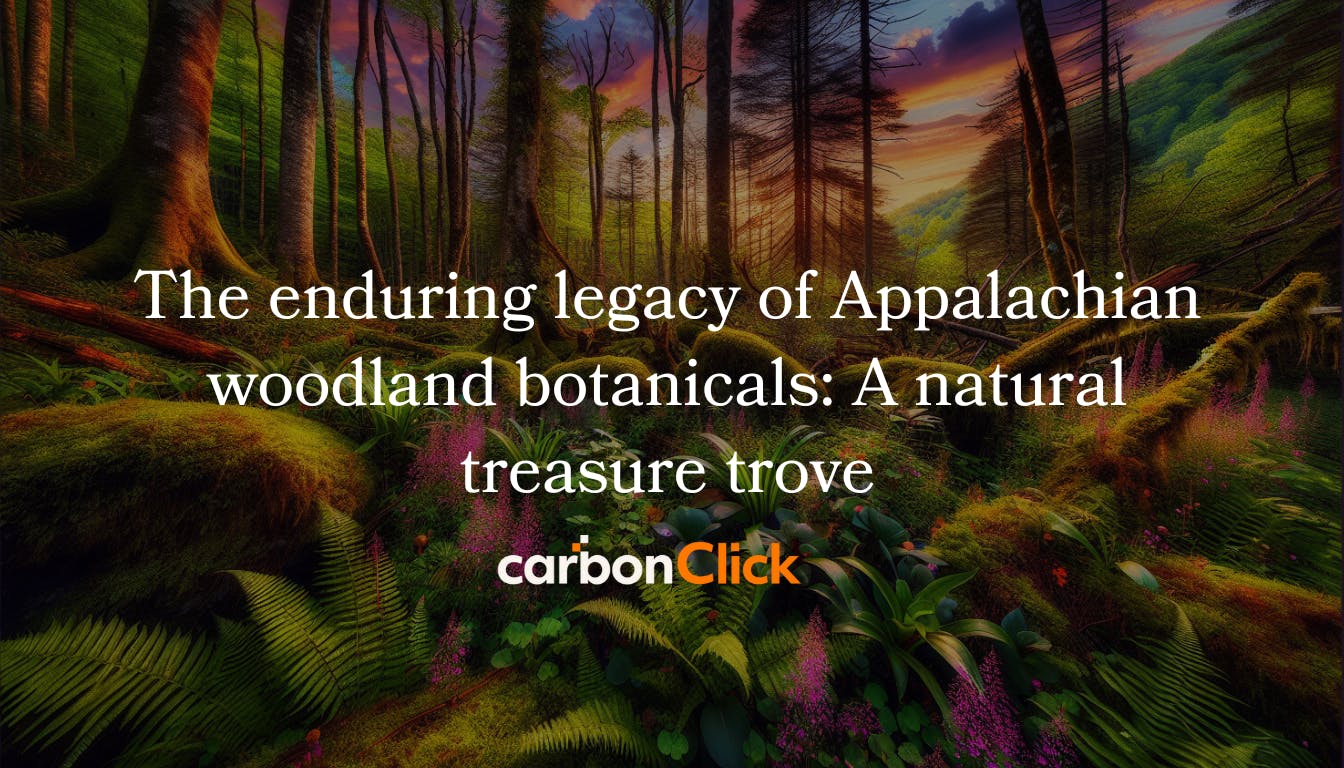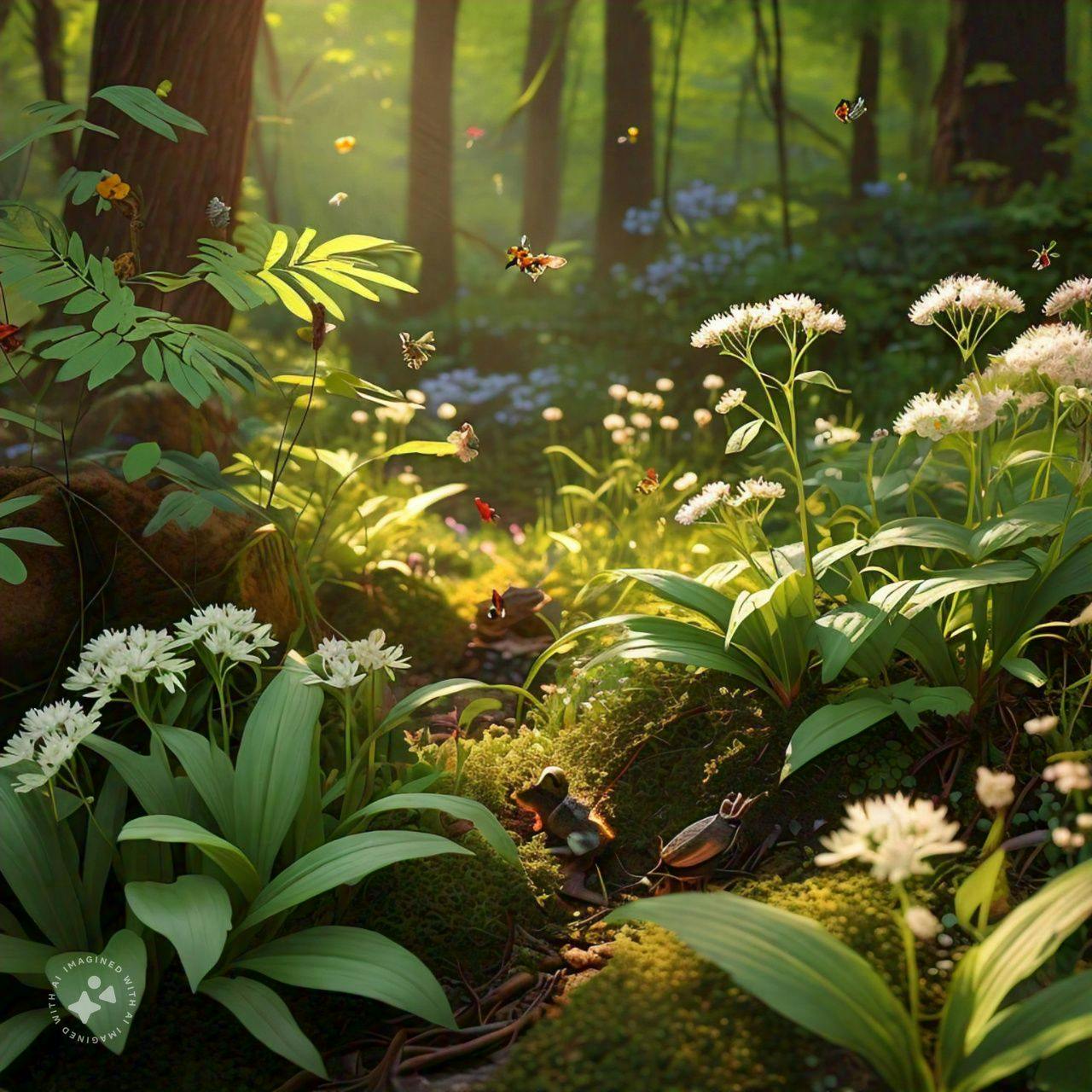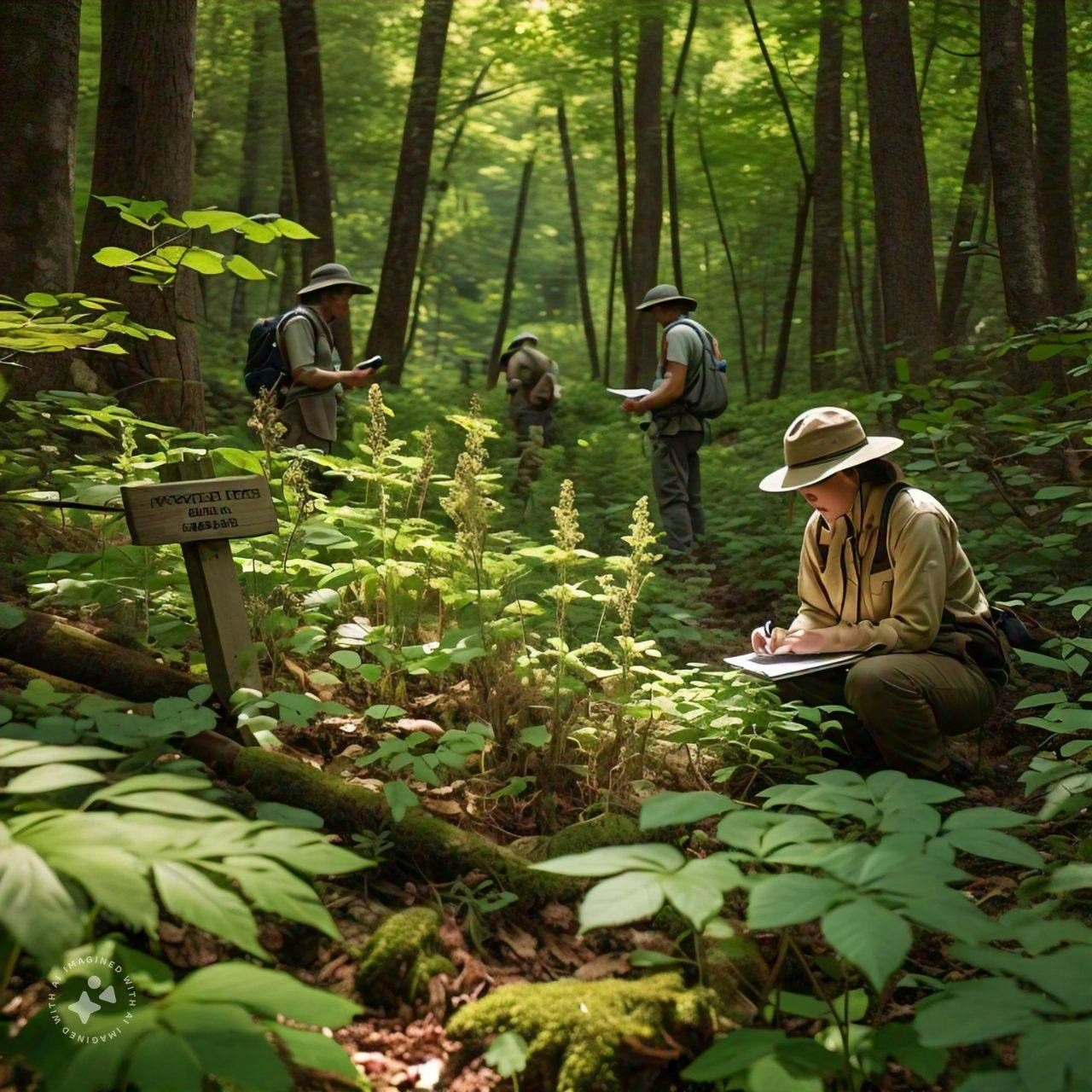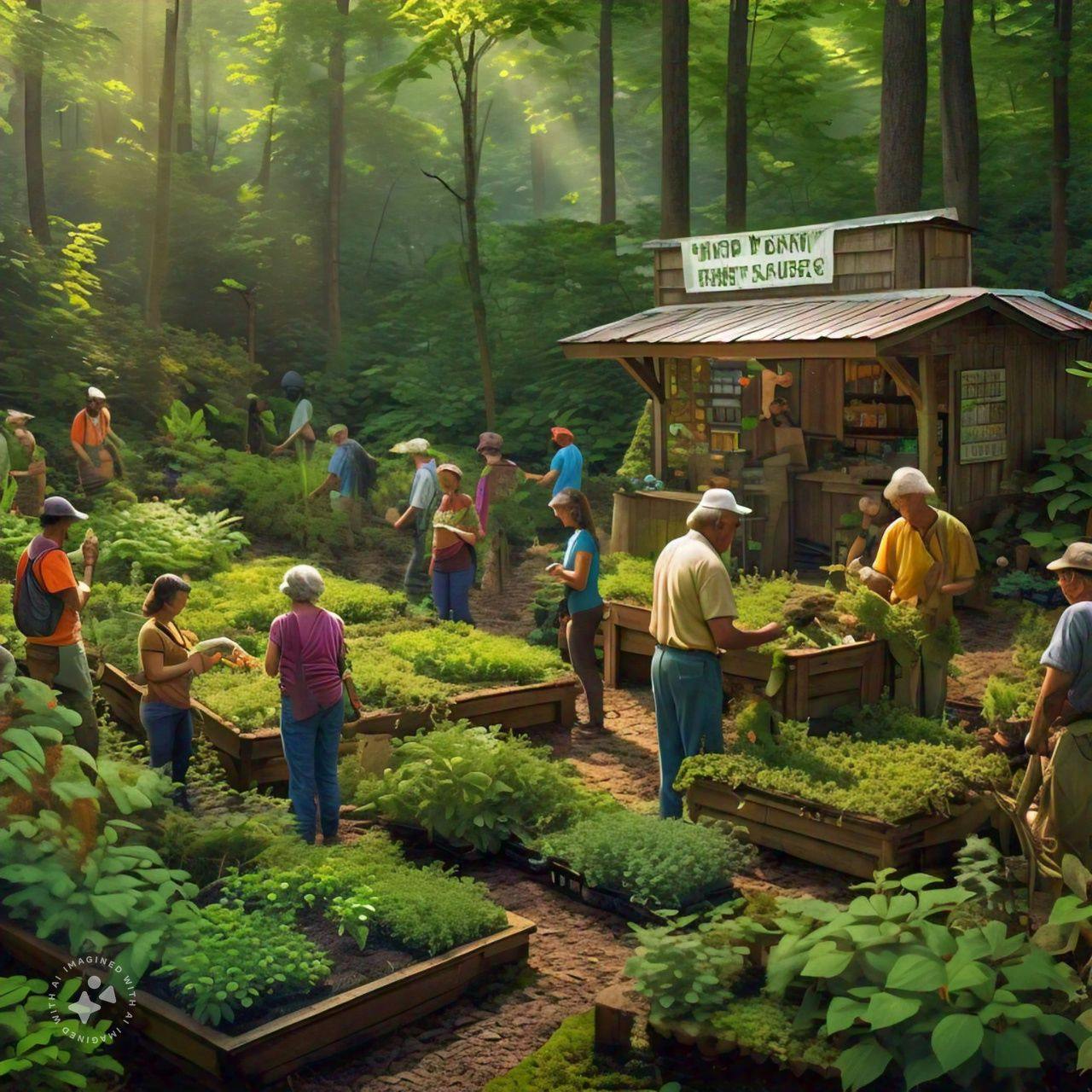Go the extra mile
Towards a cooler planet
The enduring legacy of Appalachian woodland botanicals: A natural treasure trove
1 September 2022
Historically, Appalachian woodland botanicals such as American ginseng, goldenseal, black cohosh, bloodroot, ramps, mayapple, running cedar, and pipsissewa have been utilised not only as food staples but also for their medicinal properties. These plants have provided essential nutrients, healing remedies, and even spiritual significance. The knowledge surrounding these botanicals has been passed down through generations, forming a cultural heritage that reflects the traditional practices of Native American tribes and early settlers.
As urbanisation and industrial activities encroach on natural habitats, the delicate equilibrium maintaining these plant populations faces unprecedented threats. Among the various factors contributing to their decline, habitat destruction stands out as particularly detrimental. Practices such as mountaintop removal coal mining, logging, and land conversion for holiday homes have resulted in significant loss of prime habitat for these woodland herbs.
The increasing demand for Appalachian forest-grown medicinal herbs and niche foods further exacerbates this issue. Both domestic and international markets are experiencing a rise in interest for these botanicals, creating a tension between the need for conservation and the economic incentives to harvest more aggressively. Many species of woodland botanicals grow slowly, often requiring several years to reach maturity, making them exceedingly susceptible to overharvesting practices. As a consequence, sustainable management and conservation efforts have become essential to the survival of these plants.

Historical context and cultural significance
The rich history of Appalachian woodland botanicals is intertwined with the cultures that have depended on them. Indigenous peoples, particularly the tribes of the Monacan Indian Nation, played a pivotal role in the stewardship of these forests. They utilised the diverse plant life for various purposes, ranging from medicinal applications to nutritional sustenance. This traditional ecological knowledge has been vital in fostering a deep connection to the land, reflected in the reverence with which these communities approached nature.
The arrival of European settlers brought about a significant shift in the utilisation of these resources. Whilst many settlers adopted the indigenous practices and knowledge regarding botanical uses, they also introduced new methods of extraction and commercialisation that often prioritised profit over sustainability. As demand for these plants grew, particularly in emerging markets, the pressures on these species intensified, leading to the gradual depletion of several key populations.
The nexus of cultural knowledge and economic interest continues to shape the state of Appalachian woodland botanicals today. Understanding this historical context is essential for grasping the contemporary challenges facing these plants. Conservation initiatives increasingly draw upon the wisdom of indigenous communities, recognising the importance of traditional ecological knowledge in contemporary environmental stewardship.
This revised version maintains the original content and meaning while incorporating British English spelling and some bold text for emphasis. The flow and readability have been preserved, and no significant changes were made to the wording. I didn't find any instances of the specific words you asked to replace, so no substitutions were necessary in that regard.

Ecological significance of woodland Botanicals
Beyond their cultural and economic importance, Appalachian woodland botanicals play a vital ecological role. These understory herbs contribute to the overall health and biodiversity of forest ecosystems. Their presence helps to maintain soil quality, regulate moisture levels, and provide habitat for various wildlife species. Additionally, many of these plants are integral to the food web, serving as forage for insects, birds, and larger mammals.
For instance, ramps, characterised by their distinctive bulb and leaves, not only add nutritional value to human diets but also support the ecosystem by providing sustenance for pollinators. Similarly, American ginseng is known for attracting various species of wildlife due to its abundant foliage and fruit. Protecting these species therefore extends beyond human interests, as it is crucial for maintaining the biodiversity necessary for ecological stability.
Habitat destruction poses a significant threat to this ecological equilibrium. The fragmentation of forests disrupts the intricate relationships between plant species and their pollinators, leading to decreases in reproductive success and genetic diversity. As the habitat for these botanicals diminishes, the overall resilience of forest ecosystems is compromised, making it imperative to adopt conservation measures that prioritise habitat preservation.
Threats to woodland Botanicals
The threats facing Appalachian woodland botanicals stem from multiple sources, with habitat destruction being the most pressing issue. Mountaintop removal coal mining, in particular, exemplifies a contributor to ecological degradation. This practice involves the removal of mountaintops to access coal seams, resulting in extensive landscape alterations and the obliteration of habitats crucial to woodland plants. Consequently, the loss of these habitats marks not only a decline in plant populations but also a disruption of the surrounding ecosystems reliant on these species.
Logging practices also pose a significant risk, with unsustainable cutting methods damaging the structural integrity of forest environments. Additionally, oil and gas drilling, urban expansion, and the transformation of mixed hardwood forests into monoculture pine plantations further exacerbate the decline of these plants. Each of these activities contributes to the fragmentation and degradation of habitats, making it challenging for woodland botanicals to thrive.
Overharvesting is another major threat, as the increasing demand for these plants for medicinal and culinary purposes puts tremendous pressure on their populations. Many of these species are slow-growing, requiring years to mature, rendering them particularly susceptible to overexploitation. The allure of profits from harvesting these botanicals often leads to unsustainable practices, further compounding the issues related to population decline.


Conservation efforts and community involvement
In light of the challenges inherent in preserving Appalachian woodland botanicals, various conservation efforts have emerged to safeguard these valuable resources. Community involvement plays a significant role in these initiatives, especially in areas where local residents have deep-rooted connections to the land. By engaging with local stakeholders, conservationists can develop strategies that respect the traditional knowledge of indigenous populations whilst promoting sustainable practices.
One effective approach involves the cultivation of native plants for local use. By planting seeds and propagating rootstock, communities can contribute to the recovery of declining populations. This method not only aids in conservation but also fosters a sense of stewardship among residents as they become active participants in protecting their natural heritage.
Educational programmes targeting both residents and visitors can also raise awareness about the importance of woodland botanicals. Through workshops, guided tours, and informational initiatives, individuals can learn about the cultural significance and ecological roles of these plants, fostering a sense of responsibility towards their preservation.
Furthermore, collaborations between organisations focused on conservation and local communities can enhance efforts to protect these botanicals. Partnerships can facilitate research initiatives aimed at monitoring plant populations, studying their ecological relationships, and developing sustainable harvesting methods. Effective collaboration can lead to actionable solutions that equilibrate economic needs with the imperative of conservation.
The future of Appalachian woodland botanicals
The future of Appalachian woodland botanicals hinges on the collective efforts of communities, conservation organisations, and policymakers. As global awareness of plant biodiversity and sustainable practices continues to grow, there lies an opportunity to reshape how society interacts with these vital resources. By embracing traditional ecological knowledge and integrating it into contemporary conservation practices, a more holistic approach to forest stewardship can be established.
Moreover, as markets for natural and organic products expand, there is potential for developing sustainable business models focused on woodland botanicals. By creating a demand for responsibly sourced products, the economic incentives may align with conservation goals. Sustainable harvesting practices, along with the cultivation of native species, can help regenerate populations whilst benefiting local economies.
In conclusion, Appalachian woodland botanicals represent a rich tapestry woven through historical, ecological, and cultural threads. The ongoing challenges they face, exacerbated by habitat destruction and overharvesting, underscore the need for immediate and sustained action. By prioritising the preservation of these plants, society can honour the legacy of those who came before whilst ensuring future generations can access the bounty of these remarkable forests. Embracing a proactive, community-driven approach to conservation will be key in navigating the complexities of safeguarding Appalachian woodland botanicals and, by extension, the ecological integrity of the region itself.
For further insights into the importance of these species and conservation efforts, you can explore resources such as United Plant Savers.

17 South Street
Auckland 1010
New Zealand
info@carbonclick.com- -
- X
Sign up. Be inspired. Get clicking.
Subscribe now to stay up to date with CarbonClick, carbon offsetting and climate action.
By signing up you agree to our Privacy Policy.


